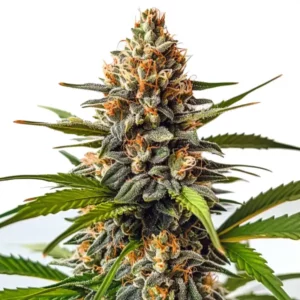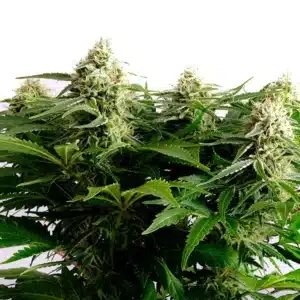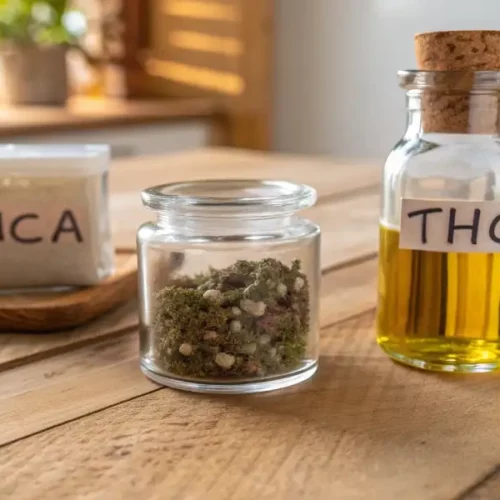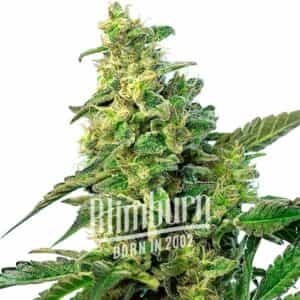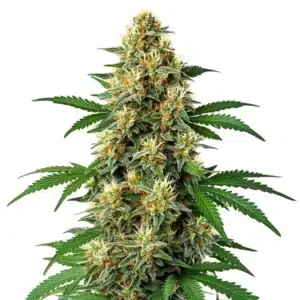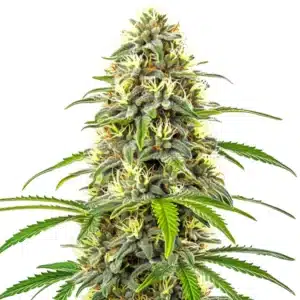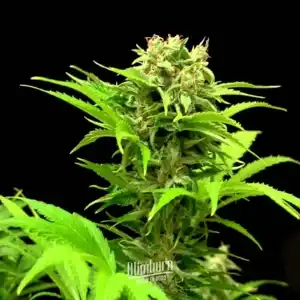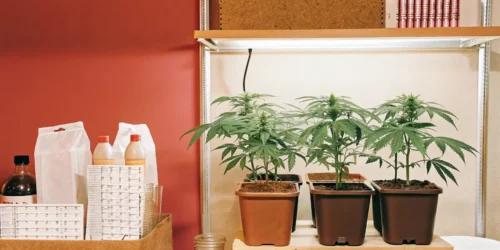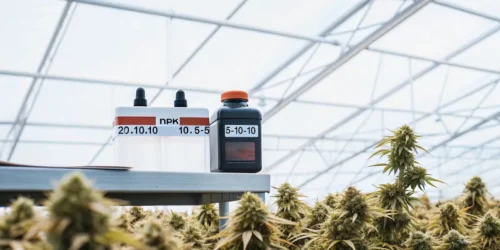Bloom Booster Fertilizers
What Are Bloom Boosters and How Do They Work?
Bloom boosters are specialized fertilizers designed to enhance the flowering phase of cannabis plants. These products are rich in phosphorus and potassium, key nutrients that promote flower development, bud density, and overall plant vitality. Unlike general-purpose fertilizers, bloom boosters are tailored to meet the specific demands of cannabis during its reproductive stage.
By supplying the plant with higher levels of these essential nutrients, bloom boosters support the formation of larger and denser buds. This targeted feeding ensures the plant’s energy is directed towards flower production rather than vegetative growth. Choosing the best bloom booster fertilizer can make a significant difference in the quality and quantity of your harvest.
Key Nutrients in Bloom Boosters for Cannabis
The primary nutrients in bloom boosters are phosphorus (P) and potassium (K). Phosphorus plays a vital role in energy transfer within the plant, supporting processes like photosynthesis and flower development. Potassium, on the other hand, strengthens cell walls and improves the plant’s overall resilience, ensuring healthier and more robust buds.
In addition to these macronutrients, many bloom boosters contain micronutrients like magnesium, sulfur, and iron. These elements further enhance the plant’s metabolic processes and contribute to the production of aromatic terpenes and cannabinoids. The best bloom booster fertilizers provide a well-balanced mix of these nutrients to maximize the plant’s potential.
Why Cannabis Plants Need Bloom Boosters During Flowering
During the flowering stage, cannabis plants shift their focus from vegetative growth to producing flowers. This phase demands higher levels of phosphorus and potassium to support the development of large, resinous buds. Standard fertilizers may not provide these nutrients in sufficient quantities, making bloom boosters an essential addition to your feeding regimen.
By using bloom boosters, growers can achieve better yields, improved resin production, and enhanced terpene profiles. These benefits are particularly important for cultivators aiming to produce top-shelf cannabis with potent effects and rich flavors.
Additionally, bloom boosters help stabilize the plant’s overall health during this critical phase, minimizing stress caused by environmental factors or nutrient deficiencies. As the plant redirects its energy towards flowering, maintaining a consistent nutrient supply ensures that the leaves remain healthy, supporting photosynthesis and overall vitality. This holistic approach not only enhances bud production but also reduces the likelihood of common flowering issues, such as nutrient lockout or premature yellowing of foliage. By incorporating bloom boosters, growers create an optimal environment for their plants to thrive, leading to a successful and abundant harvest.
Promos & Deals
Benefits of Using Bloom Booster Fertilizers
Enhancing Bud Size and Density
One of the primary benefits of bloom boosters is their ability to increase bud size and density. Phosphorus and potassium promote cell division and growth within the flowers, resulting in larger and more compact buds. This directly translates into higher yields and better market value for your harvest.
Dense buds not only weigh more but also tend to have a higher concentration of cannabinoids. By consistently using the best bloom booster fertilizer, growers can maximize their plants’ potential and achieve premium-quality results.
Improving Resin and Terpene Production
Resin production is a critical factor for cannabis quality, as it contains the plant’s cannabinoids and terpenes. Bloom boosters enhance resin production by providing the nutrients needed for trichome development. Trichomes are the tiny, crystal-like structures that house THC, CBD, and aromatic compounds.
With increased resin production, the buds become more potent and flavorful. This makes bloom boosters indispensable for cultivators looking to produce cannabis with a strong aroma, rich taste, and potent effects.
Boosting Overall Yield and Potency
Using bloom boosters during flowering can greatly increase yield and potency by providing essential nutrients at the right time. This helps plants reach their full genetic potential, resulting in abundant harvests rich in cannabinoids and terpenes. For premium cannabis growers, bloom boosters are key to achieving top quality and maximizing profits.
Types of Bloom Boosters for Cannabis
Organic vs. Synthetic Bloom Boosters
Organic bloom boosters are made from natural ingredients like bone meal, bat guano, and kelp extracts. These products improve soil health while providing essential nutrients. Synthetic bloom boosters, on the other hand, are chemically formulated to deliver precise nutrient ratios. They are often more concentrated and fast-acting than their organic counterparts.
Both options have their advantages. Organic bloom boosters are ideal for growers focusing on sustainability and soil health, while synthetic options are better suited for those seeking quick results and high efficiency. The best bloom booster fertilizer depends on your cultivation goals and growing environment.
Liquid, Powder, and Granular Fertilizers
Bloom boosters come in liquid, powder, and granular forms. Liquid boosters are ideal for hydroponic systems due to their quick absorption, while powdered options offer precise nutrient control. Granular fertilizers, being slow-releasing, work best for outdoor or soil-based setups, providing long-term nutrition with less frequent applications. Choosing the right type depends on your growing method and needs.
Best Bloom Boosters for Hydroponics and Soil
For hydroponic systems, liquid bloom boosters are highly effective due to their fast absorption and compatibility with water-based feeding schedules. In soil-based setups, both organic and granular bloom boosters work well, enriching the soil while supporting flowering.
Selecting a bloom booster tailored to your growing medium ensures optimal nutrient delivery and prevents issues like nutrient lockout. Researching the compatibility of different products with your cultivation method is key to achieving the best results.
Choosing the Best Bloom Booster Fertilizer
Factors to Consider When Selecting a Fertilizer
When choosing a bloom booster, consider factors such as nutrient content, compatibility with your growing system, and brand reputation. Look for products with high phosphorus and potassium levels, as these are essential for flower development. Checking the product’s label for additional micronutrients can also help you make an informed decision.
Another important factor is the ease of use. Some bloom boosters are pre-mixed and ready to use, while others require precise measurement and mixing. Selecting a product that fits your experience level and cultivation style ensures a smooth growing process.
Matching Bloom Boosters to Your Grow Setup
The type of grow setup you have, indoors, outdoors, hydroponic, or soil, influences your choice of bloom booster. For indoor grows, liquid boosters that integrate seamlessly with irrigation systems are ideal. Outdoor growers may benefit from slow-release granular fertilizers that provide long-lasting nutrition.
Matching your bloom booster to your setup ensures efficient nutrient delivery and prevents wastage. This tailored approach helps you achieve the best possible results with minimal effort.
Knowing the specific needs of your grow setup also helps you address potential challenges more effectively. For example, hydroponic systems often require bloom boosters with a precise nutrient composition to avoid nutrient lockout, while soil-based grows benefit from products that improve soil structure and microbial activity. Tailoring your fertilizer choice not only optimizes plant health but also reduces environmental impact by minimizing runoff and over-fertilization.
Popular Bloom Booster Brands for Cannabis Cultivation
Several reputable brands offer high-quality bloom boosters for cannabis. Products like Advanced Nutrients’ Big Bud, General Hydroponics’ Liquid KoolBloom, and FoxFarm’s Beastie Bloomz are widely used by cultivators. These brands have a proven track record of delivering consistent results and are trusted by professionals and hobbyists alike.
Researching reviews and recommendations from experienced growers can help you identify the best bloom booster fertilizer for your needs. Investing in a trusted product ensures your plants receive the highest quality nutrition during flowering.

How to Use Bloom Boosters Effectively
When to Start Using Bloom Boosters
Begin using bloom boosters at the onset of the flowering phase, typically 2-3 weeks after switching to a 12/12 light cycle for photoperiod strains. For autoflowering strains, introduce bloom boosters as soon as pre-flowers appear. Timing is crucial to ensure the plant receives the necessary nutrients at the right stage.
Gradually increase the dosage of the bloom booster as the flowering phase progresses. This allows the plant to adapt and reduces the risk of nutrient burn. Monitoring the plant’s response helps you adjust the feeding schedule for optimal results.
Determining the Right Dosage and Schedule
Follow the manufacturer’s instructions when determining the dosage and schedule for your bloom booster. Start with a lower concentration and gradually increase it as the plant shows positive growth. Overfeeding can lead to nutrient burn and negatively impact bud quality.
Using a nutrient calculator or keeping a feeding log can help you maintain consistency and track the plant’s progress. Adjusting the dosage based on the plant’s needs ensures you achieve the best results with your bloom booster.
Avoiding Overfeeding and Nutrient Burn
Overfeeding is a common mistake when using bloom boosters. Signs of nutrient burn include yellowing leaves, burnt leaf tips, and stunted growth. To avoid this, always dilute the fertilizer according to the recommended dosage and monitor the plant’s health closely.
Flushing the plants with plain water if you notice signs of overfeeding can help remove excess nutrients from the soil or hydroponic system. This corrective action ensures the plant recovers quickly and continues to thrive.
Strains That Thrive with Bloom Boosters
Green Poison Auto F1
Green Poison Auto F1 is an autoflowering strain known for its rapid growth and high yields. This strain benefits greatly from bloom boosters, which enhance its dense and resinous buds. The sweet and fruity aroma of Green Poison Auto F1 is intensified with the right bloom booster, making it a favorite among growers seeking quick results and flavorful harvests.
Guanabana
Guanabana is a Sativa-dominant hybrid celebrated for its tropical flavors and uplifting effects. Its robust structure and vigorous flowering response make it an ideal candidate for bloom boosters. When fed with high-quality bloom fertilizers, Guanabana produces oversized colas packed with trichomes, enhancing both yield and potency.
Pure Haze
Pure Haze is a classic Sativa strain with an extended flowering period and legendary cerebral effects. This strain requires precise nutrient management, and bloom boosters play a critical role in achieving its full potential. Pure Haze rewards growers with elongated, resin-rich buds and a complex terpene profile when nurtured with the best bloom booster fertilizer.
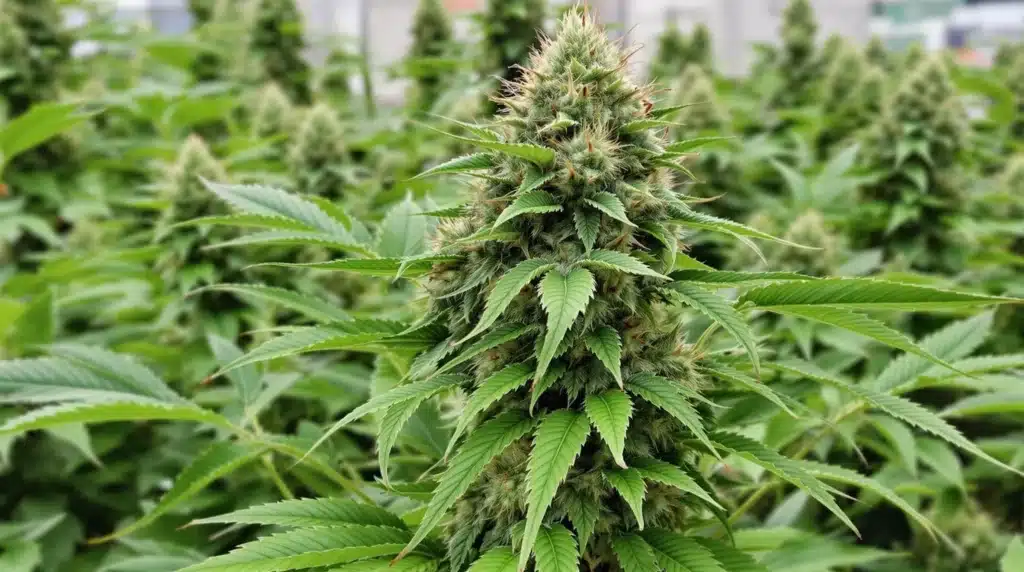
FAQs About Bloom Booster Fertilizers
What is the best bloom booster fertilizer for cannabis?
The best bloom booster fertilizer depends on your growing setup and goals. Popular options include Advanced Nutrients Big Bud, which is highly effective for hydroponics, and FoxFarm’s Beastie Bloomz, which works well for soil-based grows.
Can I use bloom boosters for all types of cannabis?
Yes, bloom boosters can be used for both photoperiod and autoflowering strains. Adjust the feeding schedule and dosage based on the plant’s growth stage and specific needs to ensure optimal results.
How often should I apply bloom boosters during flowering?
Apply bloom boosters every 1-2 weeks during the flowering phase, depending on the product’s instructions and your plant’s response. Regular monitoring ensures the plant receives adequate nutrition without overfeeding.

